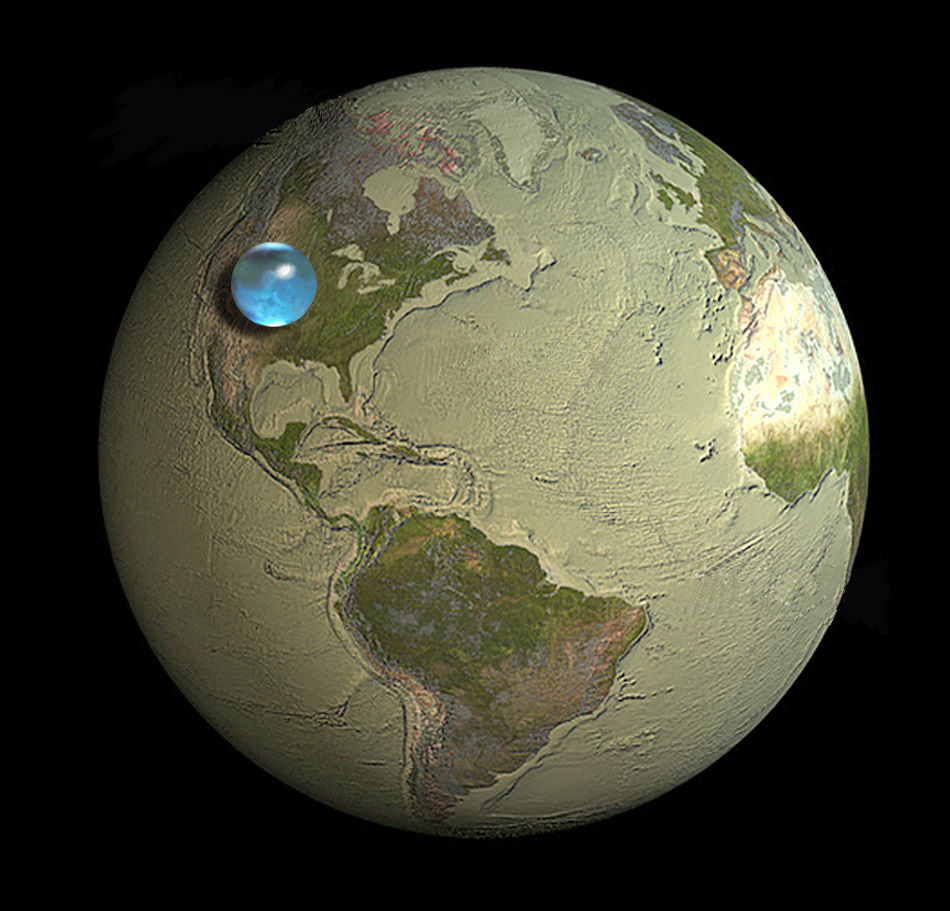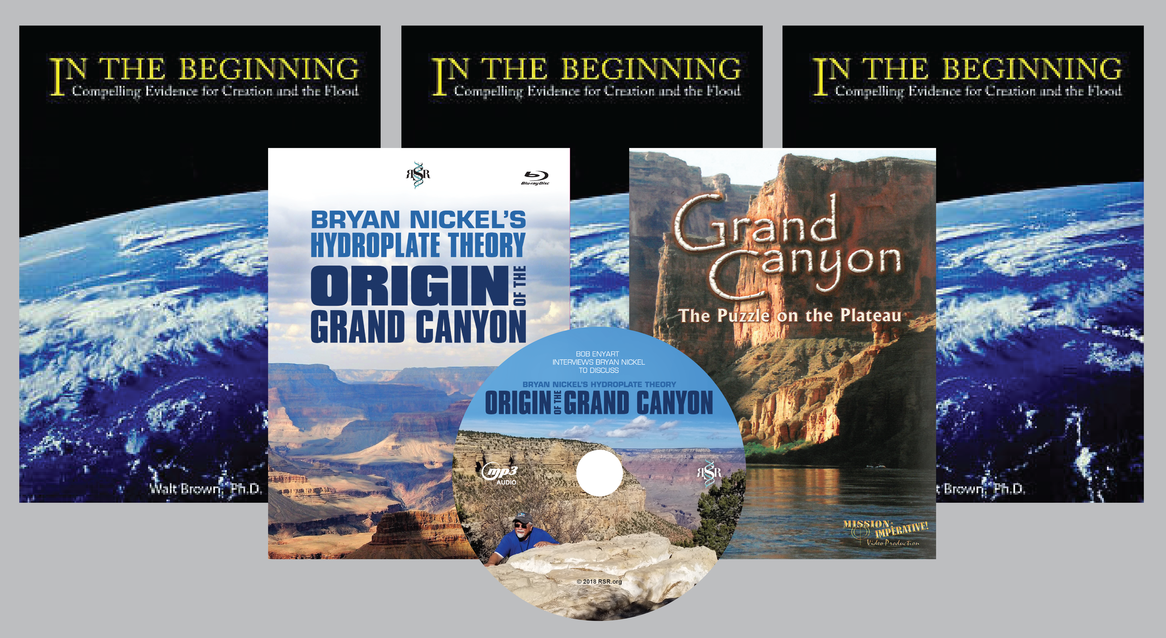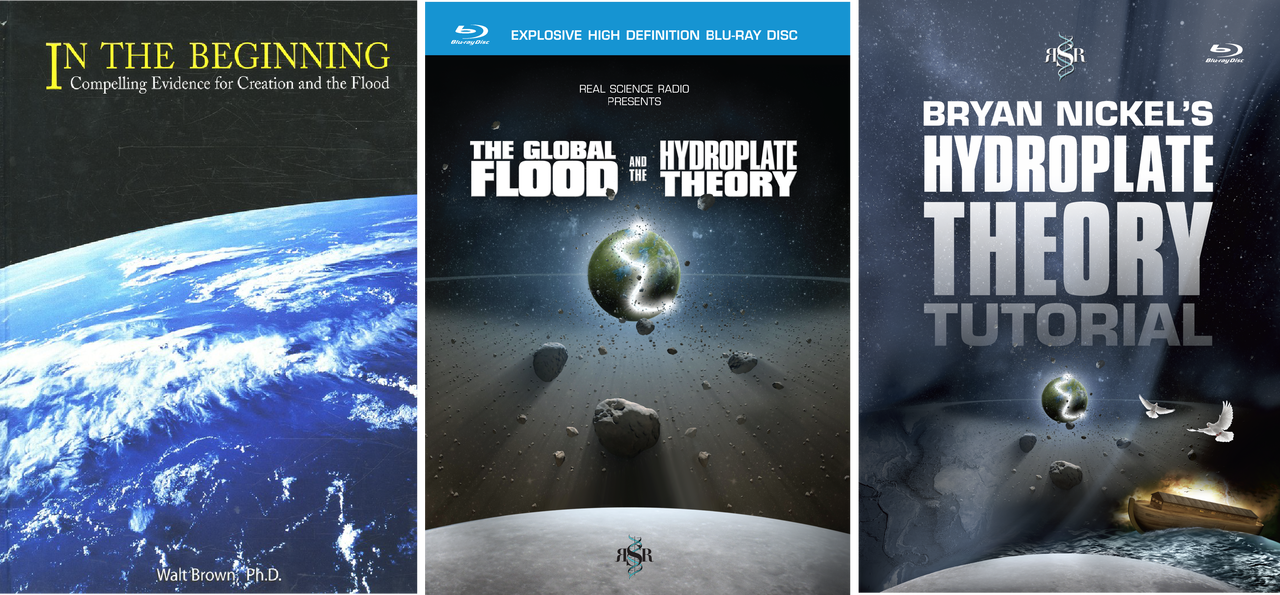
June is Grand Canyon Month at RSR! Real Science Radio host Bob Enyart continues his Bryan Nickel interview on the origin of the Grand Canyon. (Series begins at rsr.org/gc.) At the Creation Ministries Int’l site, meteorologist (with extensive geology training and experience) Michael Oard writes in How Old Is the Grand Canyon that, “the late Flood channelized flow carved the Canyon.” However, we will attempt to demonstrate that just as much evidence disproves the claim that the river carved the canyon, likewise, the following list of evidence disproves the claim that the floodwaters carved the canyon. (The list continues just below Bryan's video.)
RSR's List of Problems with 'The Flood Carved the Canyon'
- There is only one Grand Canyon: Floodwaters were running off the continents all over the world. Yet they didn't carve seven, or dozens, or hundreds of similar sites. Rather, the Grand Canyon is only one of the seven wonders of the world. Because floodwaters ran off the continents worldwide, if they had sufficient energy to carve such canyons into the continents, then in North America alone such wonders could exist in the northeast, the Midwest, the south, in Canada, and Mexico. And quite of few similar flood runoff canyons could pockmark the Earth, in South America, Europe, Asia, Africa, and Australia. But there is only one Grand Canyon!
- The walls of the canyon did not slump in on themselves: Enough time had to pass after the global flood for the sediments in the strata to partially cement into rock so that the walls of the canyon stood firm and didn't just slump in on themselves. The enormous number of steep and even sheer cliffs throughout the 277-mile long and 5,000-foot deep canyon testify to the requirement that the flood-deposited wet sediments (sand and mud) had to sufficiently cement into rock to hold back the billions of tons of sediments immediately behind them.
- The Kaibab Limestone had to fully harden to resist the great denudation: Enough time had to pass for the Kaibab limestone layer to solidify so that the waters of the massive sheet erosion that produced the great denudation would be stopped at its depth. For 10,000 square miles, an average of one thousand feet of sedimentary layers above the Kaibab (and hence, above the rim of the canyon itself) were catastrophically eroded away, before the canyon could even begin to be excavated. But the massive waters of that sheet erosion were rebuffed by the hardened Kaibab, which layer prevented that flow from eroding further downward into the sedimentary layers (except for where those waters broke through and carved the canyon).
- The Colorado Plateau had to be uplifted: Before the canyon was carved, the Colorado Plateau had already been uplifted. Magma pumped under the plateau gradually as the Colorado Rockies settled back down into the mantle. (The rising of the plateau lifted with it two great lakes a mile above sea level creating the potential energy needed to excavate the canyon).
- Not enough water to cover the earth to above the Colorado Plateau: The details of Mike Oard's runoff proposal at CMI's creation.com inherently acknowledges the impossibility of a simple flood-runoff-carved-the-canyon model. The mountains before the flood were significantly lower than those in our post-flood world. Later in the flood year, the continents compressed and the current mountain ranges "rose up in a day", as the HPT mechanisms explain so well. Mike Oard's runoff model for the canyon acknowledges that there is not enough water on Earth for floodwaters to rise above the Colorado Plateau (to carve the canyon). So he proposes a temporary inland sea-like body of water to solve this problem. The Grand Canyon cuts through the Colorado and even the higher Kaibab plateaus. Yet, if all dry land was pushed down below sea level, as Dr. Walt Brown reports, the oceans would rise by only 800 feet. Therefore, nowhere near enough water exists on Earth for the primary floodwaters to reach the elevation necessary to carve the canyon in its high plains location. Thus, enough time had to pass after the flood for this area to be raised up thousands of feet higher than its adjacent terrain. (Alternatively, Oard proposes an intermediary body of water, which he calls the Grand Canyon Inner Sea, extending for 600 kilometers to the east, which was uplifted with the "compressing" continents. Oard claims that this briefly-distinct body of water almost immediately drained to erode the canyon. So in opposing Walt Brown's dam-breach theory, Mike needs to employ this intermediary complication as an acknowledgment of the impossibility of a simple flood-runoff-carved-the-canyon model.)
- (THIS PAGE IS UNFINISHED. We hope to complete this written summary before we conclude this series on June 29th.)
- The many arches in the region needed time for their uneven cementing of sediments to occur before the softer sediments around them were swept away.
- The warm, silica-rich post-flood waters had to sufficiently cool to chemically create what is today Petrified National Forest by the silica precipitating out of solution and petrifying thousands of trees.
- Like the Babylonian, Navajo, Chinese, etc., cultural recollections of the global flood, so too the Navajo people have an account of the forming of the canyon, which then dramatically lowered the groundwater tables so that the region that supported large populations of Anasazi and others now became a forbidding dry desert.
- The biogeographical distribution of a species of squirrels on the north and south rims of the canyon strongly suggest that those animals had migrated to the region before they were then suddenly separated by the nearly 300-mile long canyon.
* RSR's Grand Canyon Special: Help spread the word, get better informed, and keep us broadcasting by purchasing RSR's $100 Grand Canyon Special, our canyon radio series on disc, two stunning videos, and three copies of Walt Brown's book!
* RSR's Hydroplate Theory Special: You may want to purchase this set of resources if...
1) You'd like to read the best creation book ever written and watch its accompanying videos
2) You like Real Science Radio and want to help it stay on the air
3) You'd like to give the gift of understanding creation and the flood to someone who could really benefit from it.
* RSR's Grand Canyon HPT Series:
- List of Problems with ‘The River Carved the Canyon’
- List of Problems with the Canyon’s Millions of Years
- List of Problems with ‘The Flood Carved the Canyon’ (this show)
- List of the Initial Conditions that Preceded the Canyon
- The Hydroplate Theory Explanation for the Grand Canyon
- Bonus material: (All part of rsr.org/hpt#metaseries)
Dr. Walt Brown's Canyon RSR Interview
Answering Michael Oard's Missing Grand Lake Shoreline
Answering Don DeYoung's Lawsuit Accusation
Debrief: RSR's Field Trip to the Canyon with Walt
* Want to Go from Geology to Cosmology? Here's RSR's latest science video:
* That Great Author, Gregory Wrightstone, Fell into the Canyon/Age Question: Wrightstone, author of the anti-climate crises Inconvenient Facts, posted, and replied:





